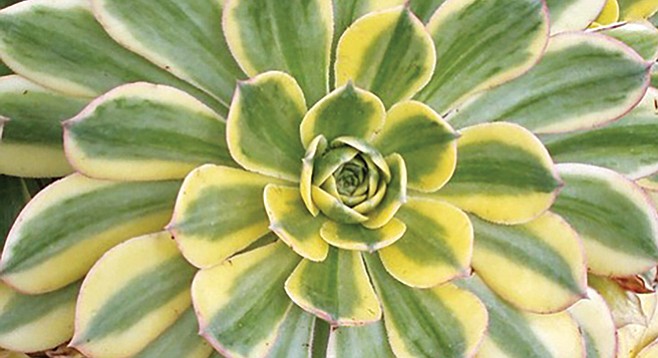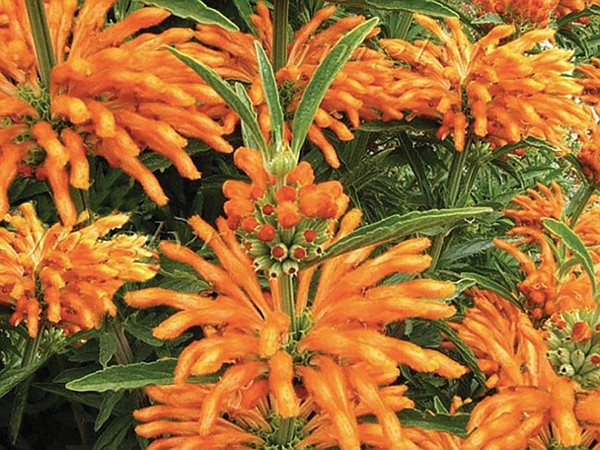 Facebook
Facebook
 X
X
 Instagram
Instagram
 TikTok
TikTok
 Youtube
Youtube

On the hottest day of last summer, we hosted a wedding reception in our backyard. The thermometer hit 103 degrees as the guests arrived at 2:30 in the afternoon. Our guests clustered in the shady bits of the yard and sipped icy sangria.
We had volunteered to host my niece’s wedding months earlier and as the rain gods would have it, strict water restrictions were announced right after we signed up as party hosters. I wanted to plant bowers of colorful begonias, impatiens, and marigolds. But my man Patrick, a thoughtful, take-charge kind of a guy, said, “Those would be beautiful, Sugar, but they drink a lot of water. We’d spend a fortune watering them and maybe be in violation of the new restrictions.”
So, he had decomposed granite delivered and covered half of our yard with it and put in a garden of rock rose, butterfly bush, and Cleveland sage. During the wedding, in the center of the garden, a classical guitarist sat playing. As guests brushed up against the sage, listening to the beautiful guitar music, wafts of sweet herby aroma rose.
Throughout this past year, my love for that garden has grown. Butterflies and hummingbirds spend hours humming around the plants. Patrick and I enjoy evening cocktails sitting amid the garden. Our teen daughter creates wildflower bouquets from the sage and butterfly bush. Our rabbit uses it as a hideaway in the heat of the day. So, as this summer rolls in, we want to continue replacing parts of the rest of our thirsty yard with low-water beauty.
On my birthday, my friend Shawn gifted me with a pot of elise lewisia — bitter root. From the flat evergreen leaves sprung up shoots of star shaped flowers in pink, yellow, and white about four inches high. I never knew a low-water plant could be so colorful. I bought four more for our front yard rock garden. The plant can re-bloom up to four times a year and some varieties of blooms are striped.
Bernice, my best friend, offered her favorite low-water plants. “We just put in a garden with cactus and succulents and a foot bridge,” she said. “My favorite is sunburst aeonium.” The succulent is rosettes of green, yellowy white, with tinges of copper on the edge of the leaves, and it grows up to 18 inches. “I also like silver carpet or dymondia. It’s a ground cover with silver-green leaves, yellow flowers in the summer, and it mounds up a bit once it is established. It works well around the base of larger plants. One other I would recommend for you is the sedum called ‘pork and beans,’” she added. “It has jellybean-shaped leaves that turn rusty red when planted in full sunlight and it flowers a yellow flower.”

Our neighbor Dominic, whose low-water garden I think is as pretty as any high-water garden, suggested Canary Island sage. “It grows up to six feet tall, if you let it, with pink and purple flowers. Its leaf is a soft gray-white color. Hummingbirds love it, and it produces a lot of showy stalks of flowers from spring through summer. It also comes in white blooms. Leonotis, or lion’s tail, would be another keeper. It grows fast and tall, up to six feet tall, with round, spiky orange flowers. It comes in white and yellow also, but the orange is the most interesting.
“Kangaroo paw, anigozanthos, is another striking low-water plant. The velvety flowers come in a deep red, yellow, and orange in spring and summer, and they are a good cut flower. If you want a delicate low-water plant, gaura is lovely. It shoots up wiry stalks with one-inch white or pink flowers, which dance about in the wind looking a bit like little butterflies.
“A few of these plants you can find at Lowe’s or Home Depot, but for one-stop shopping head to Hunter’s Nursery in Lemon Grove.”
“Sticks of fire,” answered friend Pam, or Euphorbia tirucalli. “They are incredibly easy to grow: just pop one into the dirt and watch it grow a foot or more before you know it. My husband brought home a six-inch clipping from his parents’ home and the following year we had a shrub in our garden. They are green to fiery salmon and bring an architectural aspect to a garden.”


On the hottest day of last summer, we hosted a wedding reception in our backyard. The thermometer hit 103 degrees as the guests arrived at 2:30 in the afternoon. Our guests clustered in the shady bits of the yard and sipped icy sangria.
We had volunteered to host my niece’s wedding months earlier and as the rain gods would have it, strict water restrictions were announced right after we signed up as party hosters. I wanted to plant bowers of colorful begonias, impatiens, and marigolds. But my man Patrick, a thoughtful, take-charge kind of a guy, said, “Those would be beautiful, Sugar, but they drink a lot of water. We’d spend a fortune watering them and maybe be in violation of the new restrictions.”
So, he had decomposed granite delivered and covered half of our yard with it and put in a garden of rock rose, butterfly bush, and Cleveland sage. During the wedding, in the center of the garden, a classical guitarist sat playing. As guests brushed up against the sage, listening to the beautiful guitar music, wafts of sweet herby aroma rose.
Throughout this past year, my love for that garden has grown. Butterflies and hummingbirds spend hours humming around the plants. Patrick and I enjoy evening cocktails sitting amid the garden. Our teen daughter creates wildflower bouquets from the sage and butterfly bush. Our rabbit uses it as a hideaway in the heat of the day. So, as this summer rolls in, we want to continue replacing parts of the rest of our thirsty yard with low-water beauty.
On my birthday, my friend Shawn gifted me with a pot of elise lewisia — bitter root. From the flat evergreen leaves sprung up shoots of star shaped flowers in pink, yellow, and white about four inches high. I never knew a low-water plant could be so colorful. I bought four more for our front yard rock garden. The plant can re-bloom up to four times a year and some varieties of blooms are striped.
Bernice, my best friend, offered her favorite low-water plants. “We just put in a garden with cactus and succulents and a foot bridge,” she said. “My favorite is sunburst aeonium.” The succulent is rosettes of green, yellowy white, with tinges of copper on the edge of the leaves, and it grows up to 18 inches. “I also like silver carpet or dymondia. It’s a ground cover with silver-green leaves, yellow flowers in the summer, and it mounds up a bit once it is established. It works well around the base of larger plants. One other I would recommend for you is the sedum called ‘pork and beans,’” she added. “It has jellybean-shaped leaves that turn rusty red when planted in full sunlight and it flowers a yellow flower.”

Our neighbor Dominic, whose low-water garden I think is as pretty as any high-water garden, suggested Canary Island sage. “It grows up to six feet tall, if you let it, with pink and purple flowers. Its leaf is a soft gray-white color. Hummingbirds love it, and it produces a lot of showy stalks of flowers from spring through summer. It also comes in white blooms. Leonotis, or lion’s tail, would be another keeper. It grows fast and tall, up to six feet tall, with round, spiky orange flowers. It comes in white and yellow also, but the orange is the most interesting.
“Kangaroo paw, anigozanthos, is another striking low-water plant. The velvety flowers come in a deep red, yellow, and orange in spring and summer, and they are a good cut flower. If you want a delicate low-water plant, gaura is lovely. It shoots up wiry stalks with one-inch white or pink flowers, which dance about in the wind looking a bit like little butterflies.
“A few of these plants you can find at Lowe’s or Home Depot, but for one-stop shopping head to Hunter’s Nursery in Lemon Grove.”
“Sticks of fire,” answered friend Pam, or Euphorbia tirucalli. “They are incredibly easy to grow: just pop one into the dirt and watch it grow a foot or more before you know it. My husband brought home a six-inch clipping from his parents’ home and the following year we had a shrub in our garden. They are green to fiery salmon and bring an architectural aspect to a garden.”
Comments